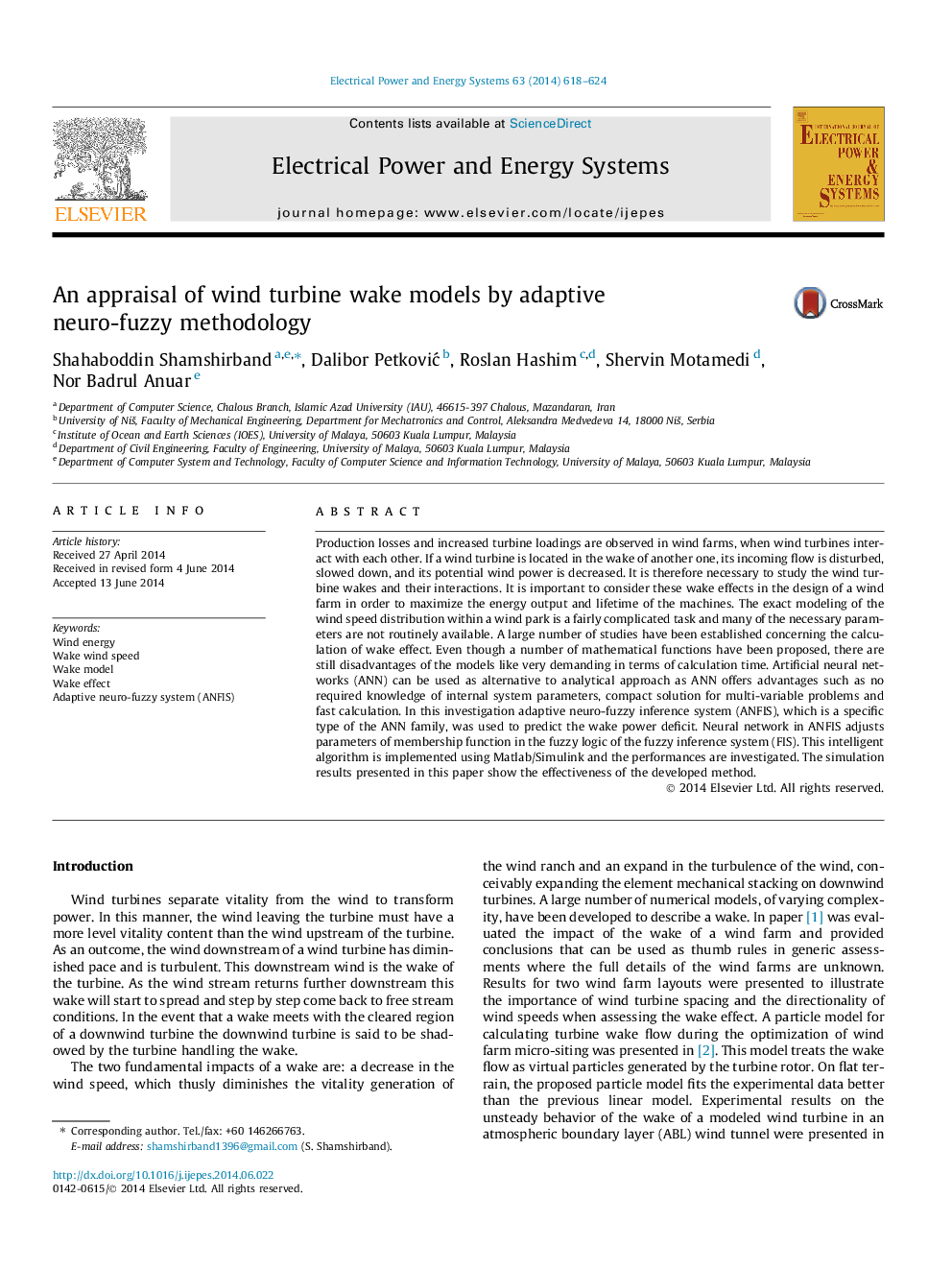| Article ID | Journal | Published Year | Pages | File Type |
|---|---|---|---|---|
| 6860180 | International Journal of Electrical Power & Energy Systems | 2014 | 7 Pages |
Abstract
Production losses and increased turbine loadings are observed in wind farms, when wind turbines interact with each other. If a wind turbine is located in the wake of another one, its incoming flow is disturbed, slowed down, and its potential wind power is decreased. It is therefore necessary to study the wind turbine wakes and their interactions. It is important to consider these wake effects in the design of a wind farm in order to maximize the energy output and lifetime of the machines. The exact modeling of the wind speed distribution within a wind park is a fairly complicated task and many of the necessary parameters are not routinely available. A large number of studies have been established concerning the calculation of wake effect. Even though a number of mathematical functions have been proposed, there are still disadvantages of the models like very demanding in terms of calculation time. Artificial neural networks (ANN) can be used as alternative to analytical approach as ANN offers advantages such as no required knowledge of internal system parameters, compact solution for multi-variable problems and fast calculation. In this investigation adaptive neuro-fuzzy inference system (ANFIS), which is a specific type of the ANN family, was used to predict the wake power deficit. Neural network in ANFIS adjusts parameters of membership function in the fuzzy logic of the fuzzy inference system (FIS). This intelligent algorithm is implemented using Matlab/Simulink and the performances are investigated. The simulation results presented in this paper show the effectiveness of the developed method.
Related Topics
Physical Sciences and Engineering
Computer Science
Artificial Intelligence
Authors
Shahaboddin Shamshirband, Dalibor PetkoviÄ, Roslan Hashim, Shervin Motamedi, Nor Badrul Anuar,
